The Major ‘Navigate’ and ‘Generate’ Tanker Groups
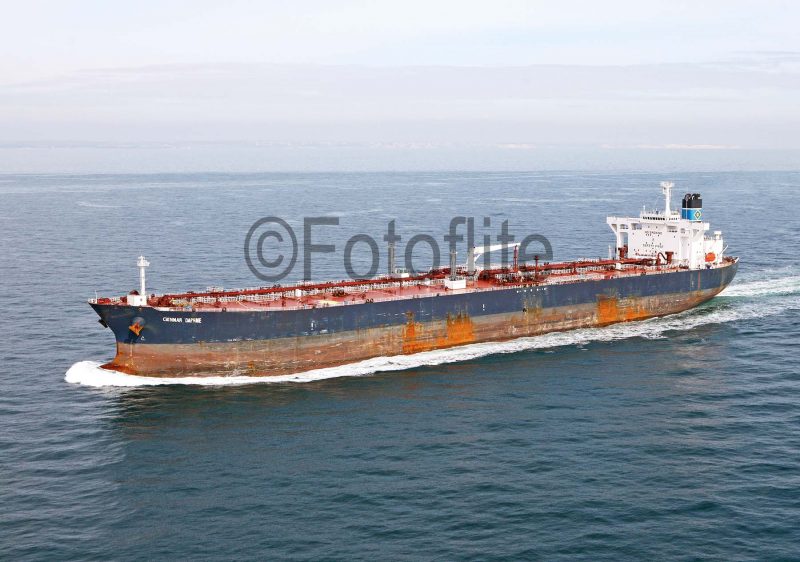
Two major independent tanker operators have been established during the last twenty years, with currently at the end of 2017 a very large fleet of 250 owned, managed and pooled large tankers in the Navig8 Group, and fifty VLCC, Suezmax, Aframax and Panamax tankers in the Gener8 Group. These related tanker groups now rival competitors such as Frontline, Teekay, Tsakos and the Overseas Shipholding Group (OSG) in the independent charter tanker market. The founder of Gener8 was Peter Georgiopoulos, who was born in New York in 1961, where his father was a maritime lawyer. He was educated in the Bronx, and gained degrees from Fordham University in New York and Dartmouth University. He began his maritime career with Tsakos Shipping and Trading (later TEN Shipping) in both their New York office and their headquarters in Piraeus, and then in the mid 1980s with financial investment firms in New York and Connecticut. He learned the art of using high yield bonds, sometimes known as ‘junk bonds’, to finance shipping company expansions at high risk, as some shipping companies were unable to secure investment grade bonds at a much lower risk.
General Maritime Ship Holdings INC.
Peter Georgiopoulos started his own maritime financing company as Maritime Equity Management in Manhattan in New York just before his thirtieth birthday in 1991. He was able to use his contacts in the high risk bond and hedge fund financial investment industry to put together equity solutions for ship financing. The first deal was for a half equity in the coastal Norwegian chemical tanker Trollvann of 7,287 dwt and built in 1985 for Bjornebo Rederi A/S of Oslo. A further eleven such deals followed over the next five years, often selling the vessel on a very profitable return. His expertise in the field of ship financing inevitably brought him to the point where he could begin to own a sizeable tanker fleet. This occurred in 1997 when he set up General Maritime Ship Holdings Inc. (GenMar), and his first pair of tankers were purchased as the Aframax tanker Nausicaa of 135,000 dwt and built in 1989 for French oil major Total, and Wilomi Alta of 133,300 dwt built in 1990 for OMI Corporation Inc. of New York and renamed as Alta. Management of these tankers had been contracted within a year to Universe Tankships (Delaware) Inc., incorporated on 1st July 1998 in Houston (Texas) as a successor company to the much more famous huge tanker fleet begun in 1956 by Daniel K. Ludwig as Universe Tankships Inc.
Universe Tankships INC.
Daniel K. Ludwig was born on 24th June 1897 in Michigan as the only child of an estate agent, and at the age of nineteen years he established a cargo shipping business by transporting molasses around the Great Lakes, and also the more risky trade of rum running during the Prohibition era. He sustained a painful back injury in the 1920s during the rescue of two seamen from one of his ships, an injury that was to stay with him for the rest of his life. His initial investment was of $5,000 in an old steamer that was converted into a barge, and twenty years later he owned a much larger fleet of tankers financed on a novel technique. He was the first tanker owner in the world in the 1930s to use the business model of borrowing the construction cost of tankers and using pre-arranged charters as collateral.
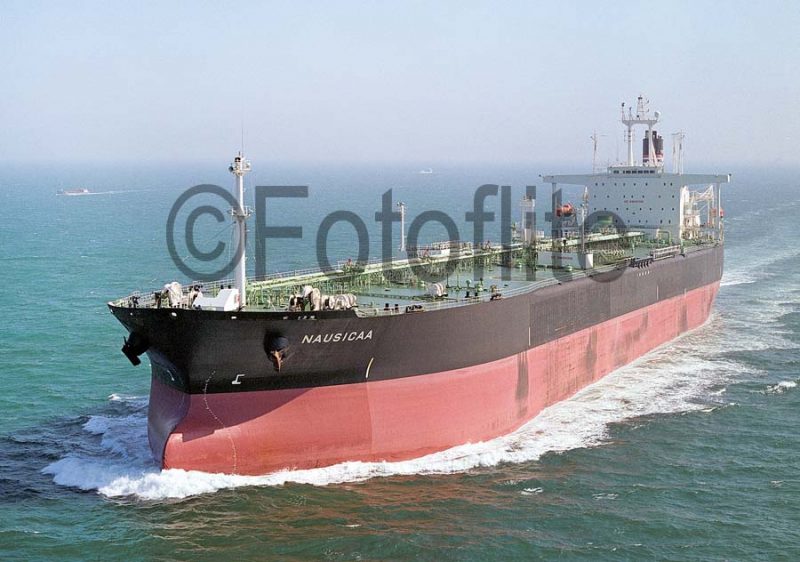
This financing technique was much used to a greater extent by the famous Greek tanker owners of Aristotle Onassis and Stavros Niarchos in the 1950s to create huge independent tanker fleets that made fortunes when the charter tanker market to the oil majors was at a high point. The technique of obtaining business loans from banks and financial institutions by using pre-arranged charters as collateral involved Daniel K. Ludwig, Aristotle Onassis and Stavros Onassis and others in never having to put up a cent towards any of these financing deals, yet they reaped gigantic profits. National Bulk Carriers (NBC) was established in 1936 to eventually become one of the biggest tanker owners in the world, but the fleet of thirteen tankers owned on the outbreak of World War II was severely decimated by German U-boats. Daniel K. Ludwig set up a shipyard in Norfolk (Virginia) in 1941 as part of the huge new shipyards that were needed to defeat the Axis powers during World War II, building 28 tankers to ‘T2’, ‘T3’ and other American designs up to 1950.
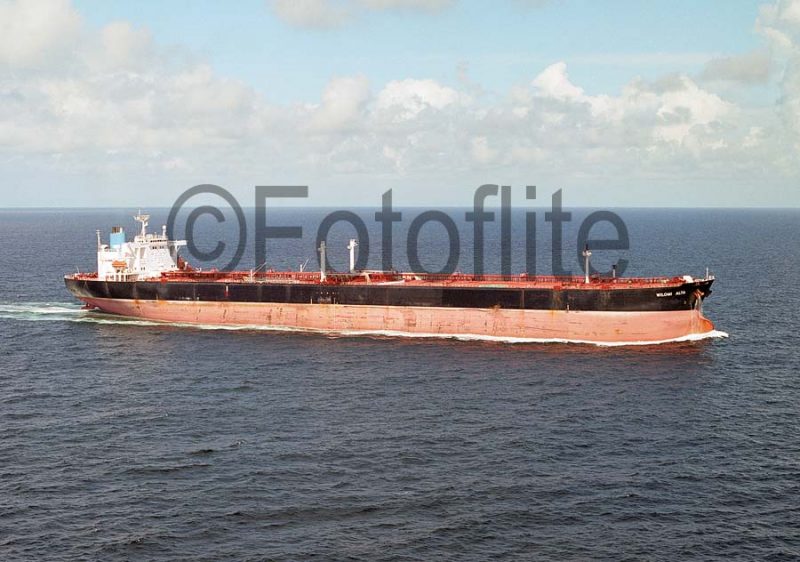
Daniel K. Ludwig then signed a ten year lease in 1951 of the former Japanese Naval Yard at Kure that had built the big battleship Yamato that was sunk during World War II by planes from American aircraft carriers. Ludwig introduced prefabrication of massive tanker sections at Kure, and during the rest of the decade built the largest tankers in the world in Japan. His tanker Petrokure of 38,021 dwt was completed in 1952 as the largest tanker in the world by this yard, and she was the lead ship of a new class and era of supertankers. Many of his tankers were given ‘Universe’ prefixes to their names e.g. the sisters Universe Leader, Universe Commander, Universe Challenger, Universe Defiance and Universe Admiral of 85,600 dwt and completed in 1956/57, plus Universe Apollo of 104,520 dwt in 1959 and Universe Daphne of 107,520 dwt in 1960. This new fleet of Universe Tankships Inc (set up in 1956), National Bulk Carriers Inc., and Seatankers Inc. in 1960 was a huge one of 46 supertankers, ore carriers and bulkers.
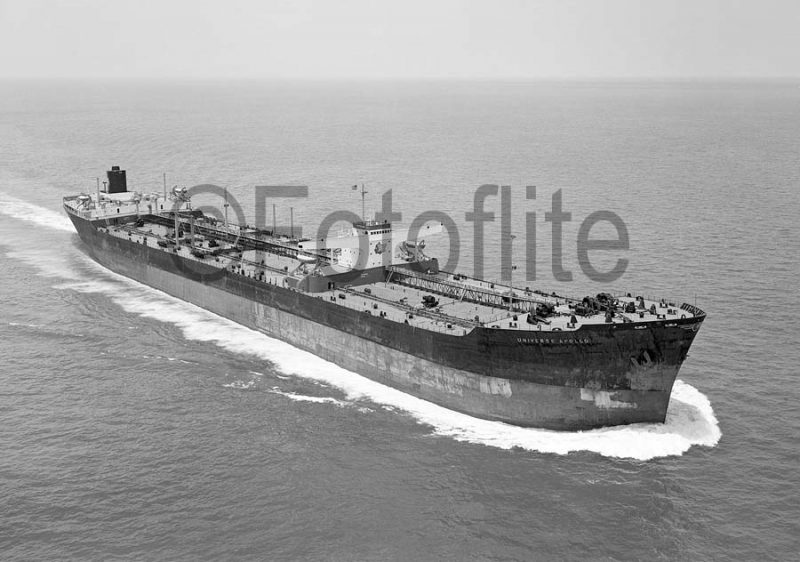
A large number totalling 104 tankers, self unloading bulkers and ore carriers and other vessels had been completed by the Kure yard when the last vessel was launched in 1962, with the yard later becoming part of the IHI Group of Japan. Daniel K. Ludwig countered his rivals in the tanker charter industry in 1968 with the completion of six huge VLCCs of 335,000 dwt that were used to transport crude oil from the Persian Gulf to Bantry Bay in south west Ireland. These were named Universe Ireland, Universe Iran, Universe Japan, Universe Korea, Universe Kuwait and Universe Portugal, with other VLCCs from Japanese yards in 1970/72 as Universe Kure, Universe Pioneer and Universe Burmah, with the latter tanker on charter to Burmah Oil. By 1976, he owned a big fleet of 55 tankers and ore carriers, twenty of which that carried ‘Universe’ prefixes to their names, with a total deadweight of 5.6 million tonnes. They flew the Liberian or Panamanian flags of convenience, giving him again the title of the third largest shipowner in the world, this time behind C.Y. Tung and Y. K. Pao of Hong Kong.
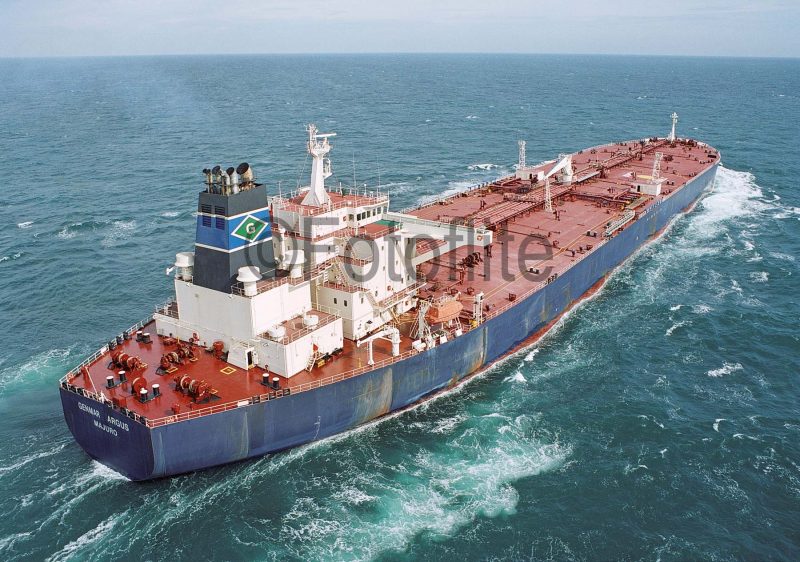
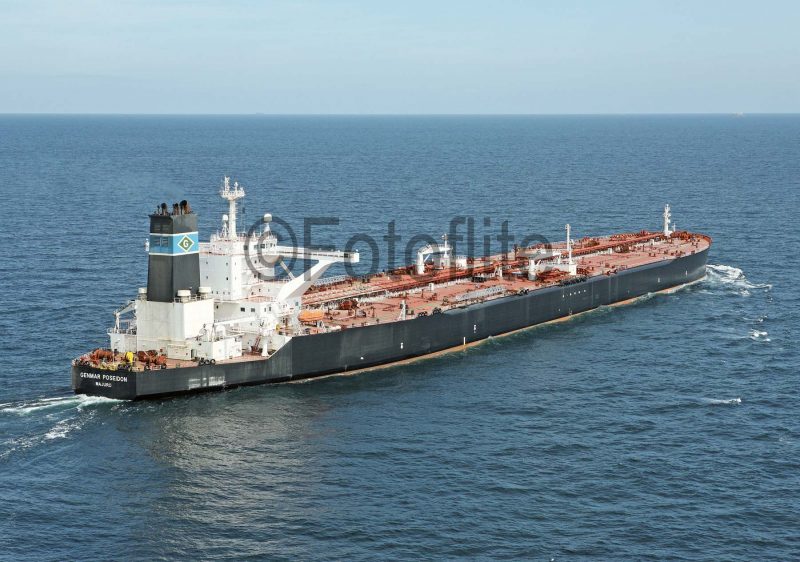
Daniel K. Ludwig also invested in a wide range of other businesses outside shipping, including oil refineries in Panama, coal mining in West Virginia, solar salt plants in Baja California in Mexico, orange plantations including the 10,000 acre Citricos de Chiriqui in Panama, and much real estate as well as private merchant banks in the United States of America. He created chains of luxury hotels in Mexico, Bermuda, Bahamas and California, operating worldwide in fifty countries with an estimated asset value of $4.5 billion. The huge drop in oil freight rates in the mid and late 1970s after the disastrous price hike in crude oil prices in 1973 by the OPEC cartel, saw many of his huge tanker fleet sold off e.g. Universe Monitor of 264,650 dwt, Universe Ranger of 273,268 dwt, and Universe Guardian of 273,616 dwt were all sold to Gray Ships Inc. in 1980. Four or more large company tankers were still laid up in the early 1980s, with Universe Burmah of 273,616 dwt in use as a floating storage tanker at Freeport (Bahamas) until all were sold off a few years later by 1986, after their charters to Gulf, Texaco and Chevron had ended. None of these tankers, however, had ‘Universe’ names by then, a diverse set of names being used in order to obtain the benefits of anonymity, especially for those on charter to Gulf, Texaco and Chevron
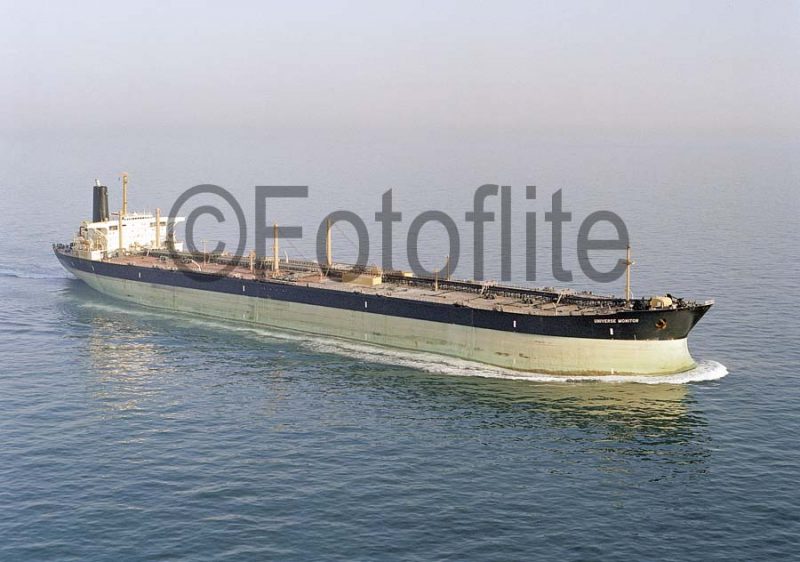
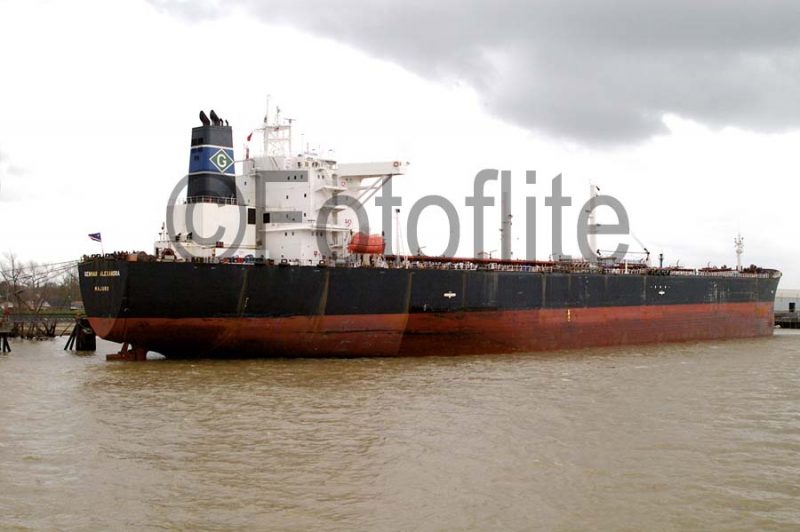
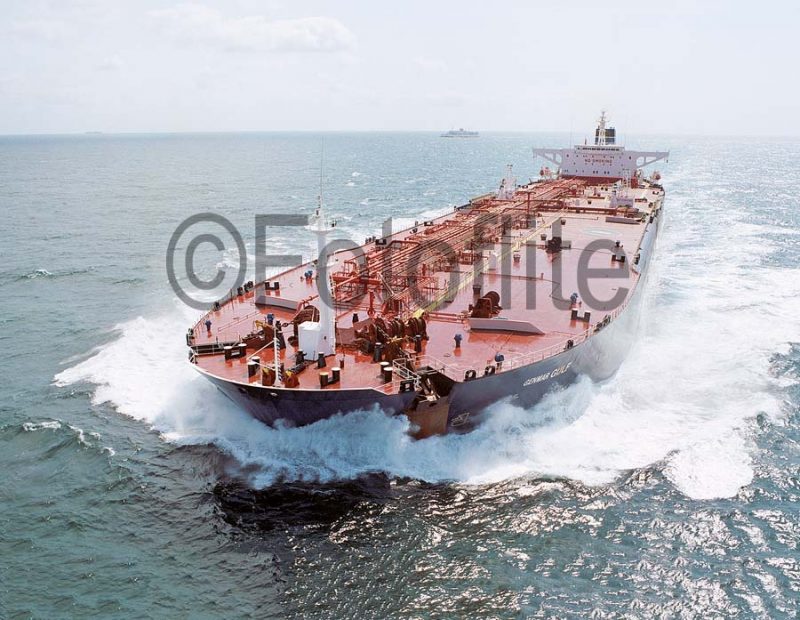
Growth Of General Maritime Corporation
Daniel K. Ludwig died in New York on 27th August 1992, and his Universe Tankships Inc. business name was later sold on to become Universe Tankships (Delaware) Inc. on 1st July 1998 to manage the growing fleet of Peter Georgiopoulos and his GenMar fleet of tankers. Peter Georgiopoulos placed his tankers on the ‘spot’ market to obtain higher income, but unfortunately the ‘spot’ market dropped considerably in 1998, just after he had paid $160 million for four tankers without long term charters to the oil majors. This quartet of sisters of 96,225 dwt were purchased as Emile, Julie, Artois and Stephanie and renamed as Genmar Agamemnon, Genmar Ajax, Genmar Constantine and Genmar Minotaur. Genmar was pressurised by its creditors and would have defaulted if it had not been bailed out by Oaktree Capital Management, an investment group that had faith in the new tanker owner, to the tune of $20 million.
The GenMar fleet traded in the Caribbean at first between the ports of Aruba, Curacao, Port Arthur, Houston, Texas City, Corpus Christi, New Orleans and to Philadelphia and New York, with occasional Transatlantic voyages e.g. Genmar Constantine sailed from Scapa Flow on 30th June 1999 with oil for Martinique. Genmar then purchased its fleet manager, Universe Tankships (Delaware) Inc. in 2000, and had built up its fleet to sixteen tankers and ore/oil carriers (eight Aframaxes, two ore/oil carriers, and six Suezmaxes) by October 2001, which were engaged on the following voyages:-
- Genmar Alexandra, Fujairah Anchorage to Mina Saud
- Genmar Agamemnon, Ferrol to Sture (Sweden)
- Genmar Ajax, New Orleans to Curacao
- Genmar Boss, Philadelphia to Venezuela
- Genmar Commander, St. Eustatius to Philadelphia
- Genmar Gabriel, Covenas (Colombia) to New York
- Genmar George, Curacao to Vera Cruz
- Genmar Hector, (OBO) Tubarao to the Tees with iron ore
- Genmar Macedon, New Orleans to Aruba
- Genmar Minotaur, Philadelphia to Skikda (Algeria)
- Genmar Pericles, (OBO) St. Eustatius to Freeport (Texas) with oil
- Genmar Spartiate, LOOP terminal to New Orleans
- Genmar Sun, Philadelphia to Colombia
- Genmar Zoe, Philadelphia to St. Eustatius
- Kentucky, Trieste to St. Eustatius
- West Virginia, Milazzo to Novorossiysk
The company tankers were frequent callers at the Dutch island of St. Eustatius in the Caribbean, which is only 8.1 square miles in area with a population of 3,500 people and an oil terminal owned by NuStar Energy as the largest private employer. Two sister tankers of 89,225 dwt, Kentucky and West Virginia, were purchased in 1999 from Alandia Tankers of Mariehamn in the Aland Islands, but they reverted to their original names of Kentucky and West Virginia, and were not given ‘Genmar’ prefixes to their names. The company was listed on the New York Stock Exchange in April 2001, and the first Initial Public Offering (IPO) was a success and raised $144 million towards future tanker purchases. These were not long coming, as eight ore/oil carriers of 96,000 dwt were purchased a year later and renamed as Genmar Challenger, Genmar Champion, Genmar Endeavour, Genmar Endurance, Genmar Spirit, Genmar Star, Genmar Trader and Genmar Trust. In January 2003, the company purchased the nineteen tanker ship fleet of Metrostar Management of Greece for $525 million. This fleet was another new entrant to the independent tanker owner fleets with ‘Crude’ prefixes to their names, with this fleet then used on charter to Lukoil of Russia for crude oil shipments from the Black Sea. These nineteen tankers were the following Aframaxes and Suezmaxes:-
- Genmar Argus, the former Crude Tria
- Genmar Ariston, the former Crude Star
- Genmar Baltic, the former Crude Baltic
- Genmar Centaur, the former Crude Target
- Genmar Gulf, the former Crude Gulf
- Genmar Hope, the former Crude Hope
- Genmar Horn, the former Crude Horn
- Genmar Kestrel, the former Crude Med
- Genmar Ocean, the former Crude Ocean
- Genmar Orion, the former Crude Okto
- Genmar Pacific, the former Crude Pacific
- Genmar Phoenix, the former Crude Ena
- Genmar Princess, the former Crude Princess
- Genmar Progress, the former Crude Progress
- Genmar Prometheus, the former Crude Sun
- Genmar Sky, the former Crude Sky
- Genmar Spyridon, the former Crude Dio
- Genmar Transporter, the former Crude Transporter
- Genmar Traveller, the former Crude Traveller
After this major acquisition, the GenMar fleet then had a carrying capacity of 5.1 million tonnes of crude oil, with most tankers operating on the ‘spot’ market.
Soponata of Portugal Takeover
This prestigious Portuguese tanker group with a history of 57 years of operation, owning 37 tankers, one multipurpose dry cargo ship, and two tugs over this period, was purchased in 2004 to give GenMar 5 tankers and a related technical management company. By 2005, GenMar was operating a big fleet of 57 tankers of 5.2 million tonnes deadweight. The 5 Soponata tankers were Peneda of 105,500 dwt renamed as Genmar Defiance, Portel of 105,500 dwt renamed as Genmar Strength, Sintra of 96,755 dwt renamed as Genmar Revenge, Alvelos of 31,565 dwt and sold on for further trading, and the dry cargo vessel Songo of 2,957 dwt sailing on a regular service from South African ports to Maputo in Mozambique, and also sold on for further trading.

Soponata was formerly established on 13th June 1947 in Lisbon as a limited company with a capital of ninety million escudos with the Portuguese liner companies of Colonial and Nacional holding half of the capital, and the oil majors Shell, Socony-Vacuum, Sacor, Atlantic and Sonap holding the other half. Sociedad Soponata Portuguesa de Navios Tanques Ltd. and had grown into a fleet of nine deep sea tankers of 144,610 dwt by 1960 named Alvelos, Bornes, Cercal, Dondo, Erati, Fogo, Marao, Sameiro and Sao Mamede. Further growth by 1973 with the larger tankers Larouco of 81,710 dwt, Jeci of 60,258 dwt, Inago of 42,906 dwt, Herminios of 42,448 dwt, Geres of 28,925 dwt, Fogo of 29,017 dwt in a fleet of ten tankers led later to Soponata owning the ‘N’ class VLCC tankers Nisa of 323,100 dwt, Nogueira of 323,097 dwt, and Neiva of 323,114 dwt. Soponata had supplied Portuguese refineries to the south of Lisbon at Sines and Setubal, and had also participated in cross trades, the ‘spot’ market, and long term charters to oil majors.
A Quartet Of New Suezmaxes
The Universal Shipholding Corporation yard at Tsu in Japan delivered the first newbuildings for GenMar during 2006/08 in four double hull Suezmaxes named Genmar George T, Genmar Harriet G, Genmar Kara G, and Genmar St. Nikolas of 153,900 dwt. They had dimensions of length 274.2 metres, moulded beam of 48.0 metres, depth of 22.4 metres and loaded draft of 16.3 metres, and were powered by a six cylinder Sulzer diesel engine of 25,125 bhp to give service speeds of 15.8 knots manufactured by Mitsui Engineering in Japan. They had a dozen wing tanks, two slop tanks, three cargo pumps, and cargo heating coils as well as a central cargo manifold served by two white cranes. They were built to celebrate ten years of profitable trading, and were paid for out of profits, which for the two year period of 2006 and 2007 were $369 million on turnover of $900 million.
In August 2008, Arlington Tankers Ltd. of Hamilton (Bermuda) was taken over with a fleet of eight double hull tankers, comprising six of 49,000 dwt and two VLCCs of 312,660 dwt, all with ‘Stena’ prefixes to their names as they were on charter to Stena A/B of Sweden, these prefixes were changed to ‘Genmar’ during 2009. Stena Vision and Stena Victory, sisters of 312,660 dwt, were the twin funnelled VLCCs built in 2001 with twin skeg rudders and extended flying bridges at the sides of their bridges that joined GenMar. The double hull Aframaxes Genmar Daphne (ex Fidelity) and Genmar Elektra (ex Fantasy) joined the fleet in 2008, and the GenMar fleet had by then been changed into one comprising all double hull tankers with an average age of only seven and one half years. A further seven double hull tankers were acquired in the middle of 2010, comprising five VLCCs of 306,500 dwt, renamed as Genmar Atlas, Genmar Hercules, Genmar Poseidon, Genmar Ulysses and Genmar Zeus, and two Suezmaxes renamed as Genmar Maniate and Genmar Spartiate.
Bankruptcy and Navig8 Takeover To Form Gener8
All was seemingly going very well for GenMar, but in 2011 an oversupply of tankers in a very weak oil freight rate market with Chinese demand very much decreased, led later in the year to the liabilities of the company being ahead of its assets. GenMar filed for Chapter 11 bankruptcy in the United States on 17th November 2011. The company debt was then reduced by $600 million by a further $175 million loan from Oaktree Capital Management, which then became the majority owner of GenMar. The remaining $425 million debt reduction was negotiated with restructuring arrangements with creditors and the sale of two Aframaxes and two Suezmaxes, and the company came out of bankruptcy in April 2012. New ‘eco friendly’ tankers were then purchased including seven new VLCCs from Scorpio Tankers Inc. for $735 million in 2014, with excellent fuel efficiency and reduced smoke emissions. Seven Genmar VLCCs had joined the Seawolf Tankers pool in July 2011, which was managed by Heidmar Inc., one of the leading commercial operators of tankers in the world.
Further expansion was provided by the merger in February 2015 with Navig8 Crude Tankers Inc., which added fourteen Eco VLCCs to increase the value of the combined fleet to three billion dollars. General Maritime Corporation was then renamed as Gener8 (abbreviation for ‘Generate’) with a fleet of 35 tankers, comprising two dozen VLCCs, seven Suezmaxes, two Aframaxes and two Panamaxes, with fifteen VLCC newbuildings coming from Navig8 Crude Tankers Inc., giving a total of fifty large tankers.
Navig8 Inc had been established in 2003 as the FR8 (‘Freight’) Shipmanagement (Pte) Ltd. tanker pool in Singapore, and rapidly gained a large number of pool members from eighteen countries in seven crude and product tanker pools, and five chemical tanker pools. These included the tanker fleets of well known companies such as Bernard Schulte, Hellenic Tankers, ETC Tankers, Finn Fleet Tankers, SBM Offshore, Sloman and many more. The company name of Navig8 is an abbreviation for ‘Navigate’, and the company also uses the abbreviations Navig8Tankers, Navig8Chemicals, Navig8Ship Management, and Integr8Fuels for its divisions, with two bunker tankers of 7,000 dwt operating for its ‘Integrate’ bunker supplying subsidiary. Navig8 Tankers was established in March 2007, and Navig8 Chemical Tankers was established in 2013.
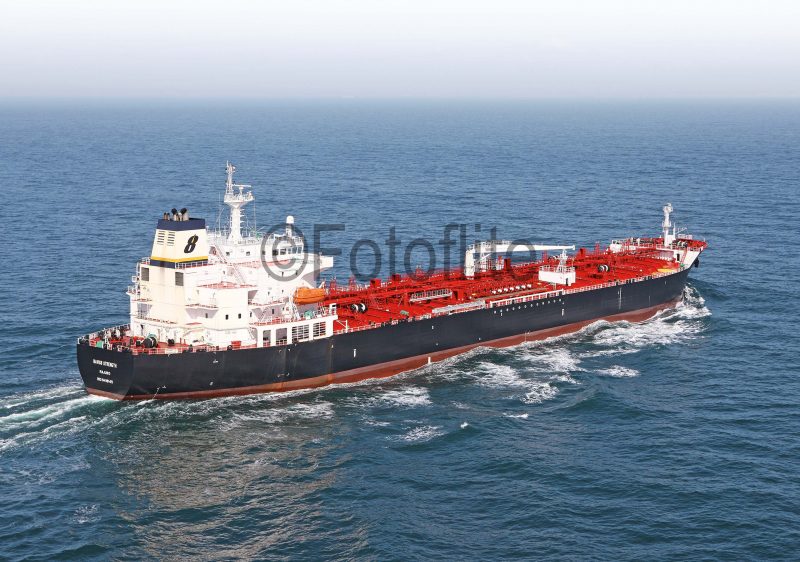
Navig8 Crude Tankers Inc. was established in December 2013, and the company raised through Initial Public Offerings (IPO) a total equity sum of $405 million, which was then used to order fifteen VLCC newbuildings from Hyundai Samho Heavy Industries yard in Korea, the Hanjin Heavy Industries yard in the Phillipines, and the Shanghai Waigaoqiao Shipbuilding yard in China. By the end of 2017, a fleet of fifty owned VLCC, Suezmax, Aframax and Panamax tankers was operating in the large merged Gener8 Group.
The existing General Maritime Corporation shareholders own 52.55% of the merged Gener8 company, and the Navig8 Crude Tankers Inc. shareholders own 47.45% of the merged Gener8 company. In September 2017, Gener8 shares were changing hands on the New York Stock Exchange for five dollars a share, with increasing confidence in the future of the company. The tanker fleet of this rapidly growing major Gener8 independent tanker owner included the following tankers at the end of 2017:-
- Gener8 Andriotis, VLCC delivered 2016
- Gener8 Apollo, VLCC delivered 2016
- Gener8 Ares, VLCC delivered 2016
- Gener8 Athena, VLCC delivered 2015
- Gener8 Atlas, VLCC delivered 2007
- Gener8 Chiotis, VLCC delivered 2016
- Gener8 Constantine, VLCC delivered 2016
- Gener8 Ethos, VLCC delivered 2017
- Gener8 Hector, VLCC delivered 2017
- Gener8 Hera, VLCC delivered 2016
- Gener8 Hercules, VLCC delivered 2007
- Gener8 Macedon, VLCC delivered 2016
- Gener8 Miltiades, VLCC delivered 2016
- Gener8 Nautilus, VLCC delivered 2016
- Gener8 Neptune, VLCC delivered 2015
- Gener8 Nestor, VLCC delivered 2017
- Gener8 Oceanus, VLCC delivered 2016
- Gener8 Perseus, VLCC delivered 2016
- Gener8 Poseidon, VLCC delivered 2002
- Gener8 Strength, VLCC delivered 2015
- Gener8 Success, VLCC delivered 2016
- Gener8 Supreme, VLCC delivered 2016
- Gener8 Zeus, VLCC delivered 2010
- Gener8 Zoe, VLCC delivered 2017
- Gener8 Argus, Suezmax delivered 2000
- Gener8 George T, Suezmax delivered 2007
- Gener8 Harriet G, Suezmax delivered 2006
- Gener8 Kara G, Suezmax delivered 2007
- Gener8 St. Nikolas, Suezmax delivered 2008
- Gener8 Maniate, Suezmax delivered 2010
- Gener8 Spartiate, Suezmax delivered 2011
- Gener8 Defiance, Aframax delivered 2002
- Gener8 Pericles, Aframax delivered 2003
- Gener8 Compatriot, Panamax delivered 2004
- Gener8 Companion, Panamax delivered 2004
Navig8 Group Fleet
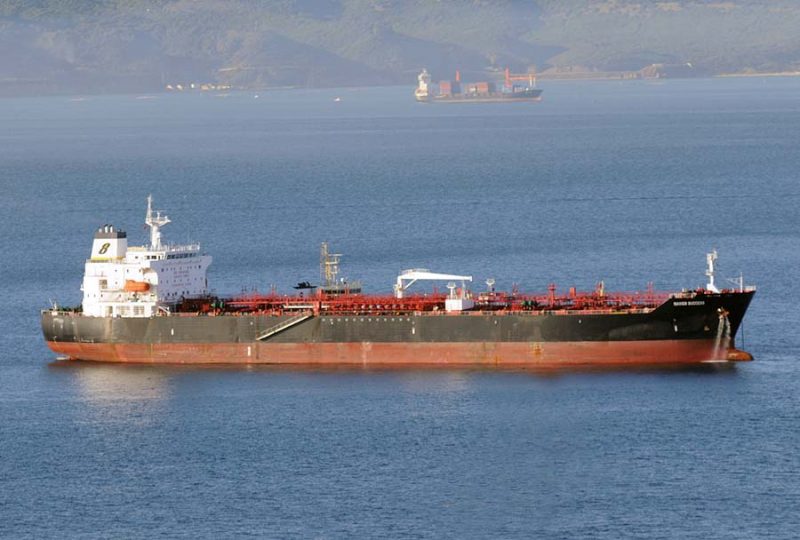
A huge fleet of 250 owned, managed and pooled tankers in the VLCC, Suezmax, Aframax, Panamax and Handymax sizes operate in the Navig8 chemical, product and crude oil carrying pools. These include 86 chemical tankers in the range from 12,000 dwt to 54,000 dwt, and 164 product and crude tankers in the Handymax, Panamax, Aframax, Suezmax and VLCC sizes.
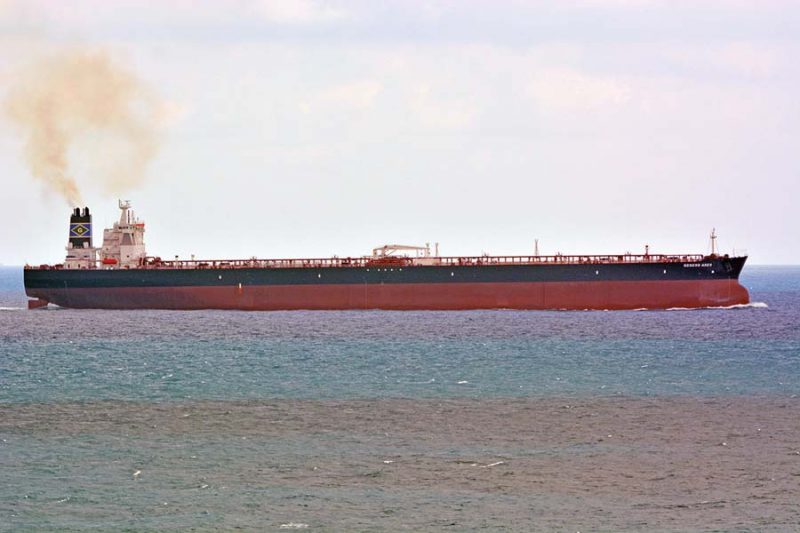
The chemical tanker pools include eight ‘S’ class owned tankers of 25,000 dwt, eighteen ‘A’ class owned tankers of 37,600 dwt, and eight owned tankers of 49,500 dwt in Navig8 Constellation, Navig8 Tanzanite, Navig8 Turquoise, Navig8 Topaz, Navig8 Tourmaline, Navig8 Universe, Navig8 Victoria, and Navig8 Violette.
The product tanker pools include the owned tankers Navig8 Exceed, Navig8 Excel, Navig8 Excelsior, Navig8 Expedite, Navig8 Experience, Navig8 Executive, Navig8 Express, Navig8 Excellence, Navig8 Faith, Navig8 Grace, Navig8 Gallantry, Navig8 Guard, Navig8 Guide, Navig8 Goal, Navig8 Gauntlet, Navig8 Gladiator, Navig8 Gratitude, Navig8 Honor, Navig8 Pride, Navig8 Providence, Navig8 Precision, Navig8 Prestige, Navig8 Sanctity, Navig8 Solace, Navig8 Solidarity, Navig8 Spirit, Navig8 Stability, Navig8 Stealth, Navig8 Strength, Navig8 Success, Navig8 Symphony, Navig8 Steadfast and Navig8 Supreme.
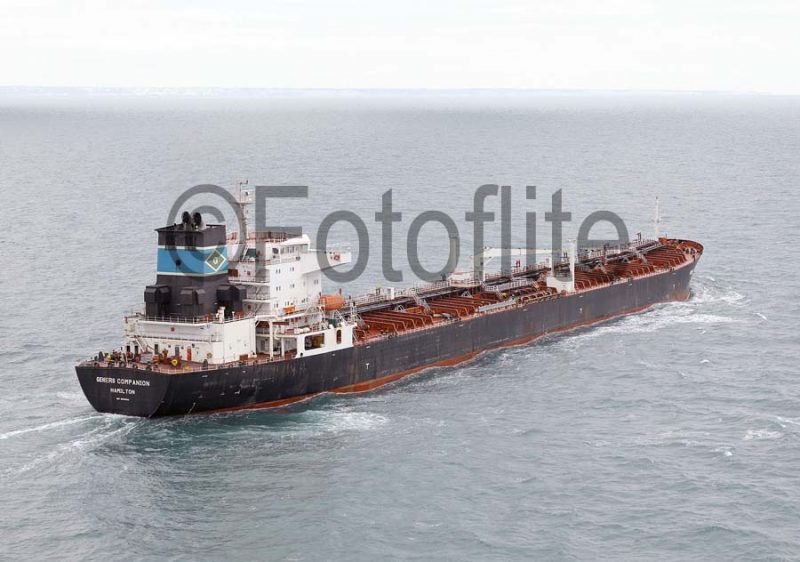
Postscript
The fast moving world of independent charter tanker owners is constantly evolving and changing. Many of the Gener8 tankers are named for great Athenian leaders and heroes e.g. Miltiades was the Athenian hero at the Battle of Marathon in 490 BC, and Pericles was the great Athenian leader in the battles with Sparta in the First Peloponnese War (459-446 BC) and in the Second Peloponnese War in 431 BC, with his death occurring two years later. Greek gods and goddesses have also appeared in the fleet e.g. Atlas, Apollo, Ares and Athena as well as Greek kings and mythological figures.
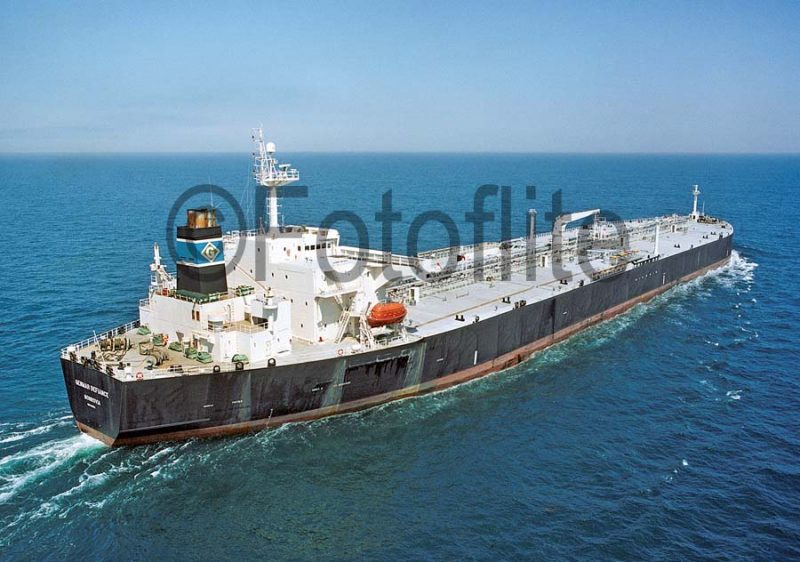
When I wrote my seminal ‘World Tankers’ book in 1996, the independent tanker charter market consisted of many relatively small fleets of tankers on charter to the oil majors. Since then, after a period of 21 years, the tanker charter market has fragmented into a few very much larger independent tanker charter fleets that have replaced the smaller operators e.g. Teekay Corporation have a fleet of well over one hundred FPSO, Suezmax, Aframax and LNG tankers, Frontline Tankers have a fleet of 57 tankers consisting of 22 VLCCs, 17 Suezmaxes, 17 Aframaxes and one Handymax tanker, Tsakos Shipping and Trading S.A. have a fleet of ninety tankers, and Overseas Shipholding Group (OSG) have a fleet of two dozen American flag tankers. Gener8 with a fleet of 50 VLCCs, Suezmaxes, Aframaxes and Panamaxes, and Navig8 with a fleet of 250 pooled chemical and product tankers are well placed among these giants of the independent tanker charter market.
In late 2017, Euronav N.V. of Belgium, owned by CMB since 1995, with a fleet of 50 Aframaxes and VLCCs in the range from 150,000 dwt to 323,000 dwt, acquired Gener8 in a deal worth $1.66 billion. This included the fleet and all of the stock of Gener8, with Gener8 then owning only 28% of the combined fleet. Also, 6 VLCCs of the combined entity from the Gener8 fleet were sold to International Seaways for $434 million in a separate deal. There were also further benefits to Euronav from the takeover of Gener8 via the Tankers International (TI) VLCC pool that it manages, with the TI pool set to grow by 58% to 57 VLCCs including three named tankers in TI Europe of 441,561 dwt, TI Hellas of 319,254 dwt, and TI Topaz of 319,430 dwt. Euronav N.V. is now the biggest owner of U.S. listed VLCCs and crude tanker categories, with 31% and 26% respectively of these categories, compared to only 18% and 21% respectively of Frontline SF owned by John Fredriksen in second position. Teekay Tankers and other large international corporate tanker groupings occupy the positions below second position in these U.S. listed categories.

Gener8 employs seafarers from Great Britain, Russia, Ukraine, Greece, India, Portugal, Singapore and the Philippines, and had established its own crewing agency as General Maritime Crewing Ltd. in February 2005. Russian seafarers had been employed from 2001, and it was decided to establish this crewing agency in Novorossiysk, the biggest port on the Black Sea, as a source of good quality seafarers, especially tankermen. The current Gener8 fleet employs five hundred Russian and Ukraine seafarers, and one thousand other seafarers from other nations.
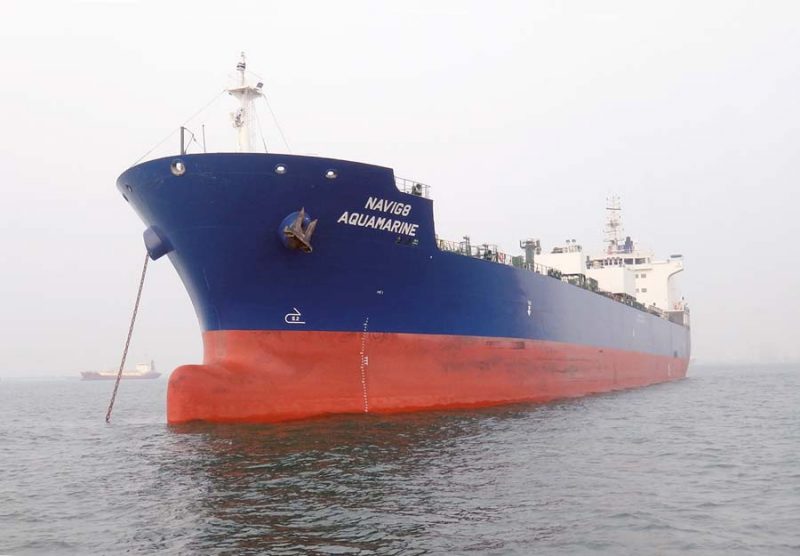

Gener8 funnel colours are black with a yellow ‘G’ inside a yellow edged green diamond on a yellow edged central dark blue band, but after the merger with Navig8 Crude Tankers Inc. the yellow edging has been replaced by white, hull colours remain as black with red boot topping. The tankers operate on charter to BP, Shell, ChevronTexaco, ExxonMobil, ConocoPhillips and other oil majors in the Pacific, Atlantic, Caribbean, Mediterranean, Black Sea and North Sea. The average ‘spot’ and time charter rates for VLCCs, Suezmaxes, Aframaxes and Panamaxes has dropped by 40% in 2017 compared to 2016. The Navig8 funnel colours are dark blue with a light blue ‘8’ on a broad white band. The Navig8 and Gener8 fleets conform to very exacting standards transporting billions of barrels of oil worldwide in a safe and environmentally friendly way, and the Navig8 and Gener8 Groups have many offices worldwide.
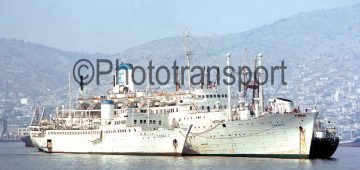
Comments
Sorry, comments are closed for this item